The coastal waters of the West Coast of North America are at risk of becoming a dead zone, and they can only be saved if this predatory species recovers.
The population of the sunflower sea star, scientifically known as Pycnopodia helianthoides, has been rapidly declining since 2013, partly due to the sea star wasting syndrome, whose main cause may be rising sea temperatures.
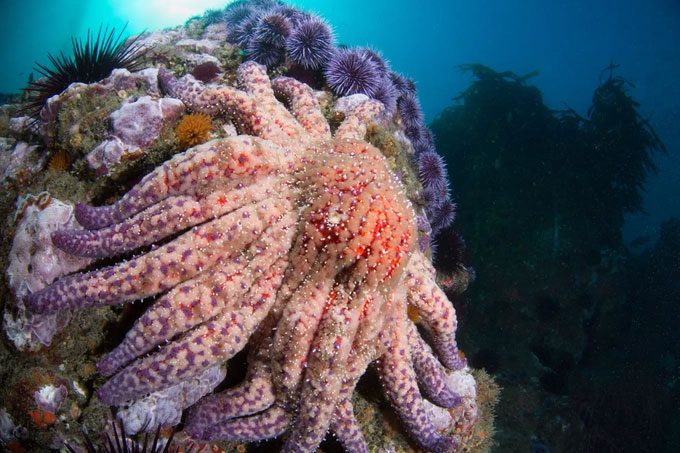
A sunflower sea star crawling on a coral reef in Point Dume State, California, USA. Photo: (Brent Durand/ Getty Images).
As sea stars disappear, some of the animals that feed on them have the opportunity to flourish. The population of kelp-eating sea urchins has exploded, leading to the devastation of underwater forests. Authors of a recent report state that the disappearance of sea stars is the primary cause of the threat to these forests.
The aforementioned research report was published in February 2023 in the Royal Society journal, indicating that if the population of sea stars can be restored, whether through natural or artificial methods, it would help control the number of sea urchins and restore valuable kelp forests.
According to the National Oceanic and Atmospheric Administration (NOAA), kelp forests provide a habitat for a diverse array of plant and animal species, making these ecosystems richer than other marine ecosystems. Animals that depend on the abundant vegetation here to avoid predators or storms include seals, sea lions, whales, otters, birds, and several other species.
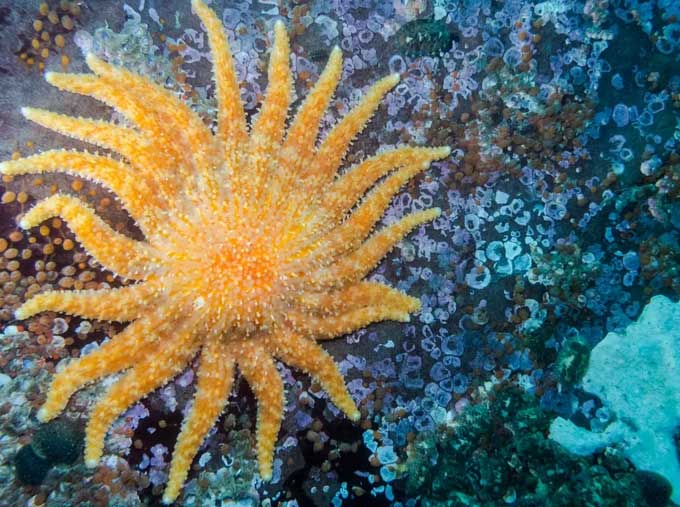
The sunflower sea star is among the largest starfish species in the world. An adult sea star can have a span of up to 90 cm. (Photo: naturediver/Getty Images).
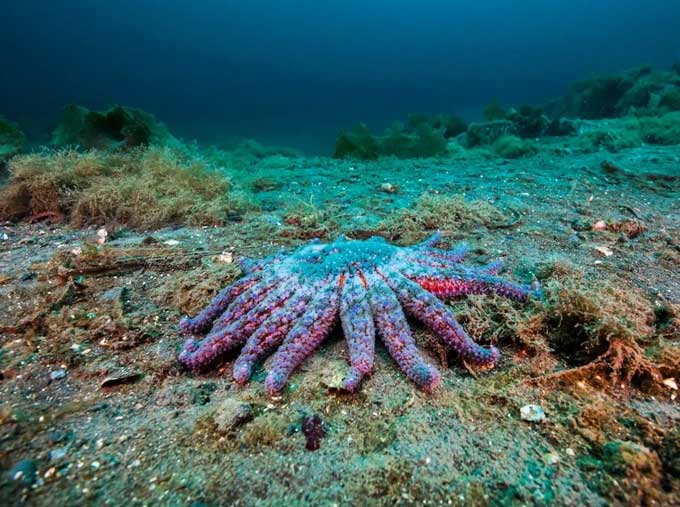
Though commonly referred to as starfish, they are not fish. This is a sunflower sea star in Alaska. (Photo: Jennifer Idol/Stocktrek Images/Getty Images).
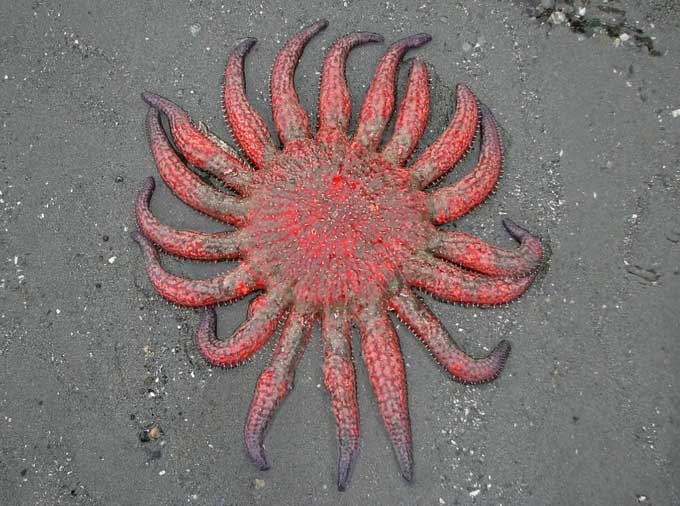
They are voracious predators, consuming sea urchins, clams, snails, sea cucumbers, and other starfish. (Photo: Neil Gelham/Getty Images).
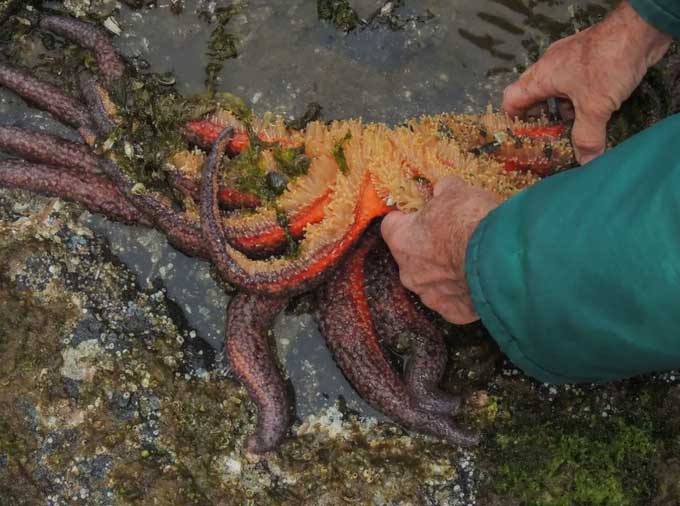
An adult has between 16 to 24 arms. They use these arms to move and capture prey. (Photo: RONSAN4D/Getty Images).
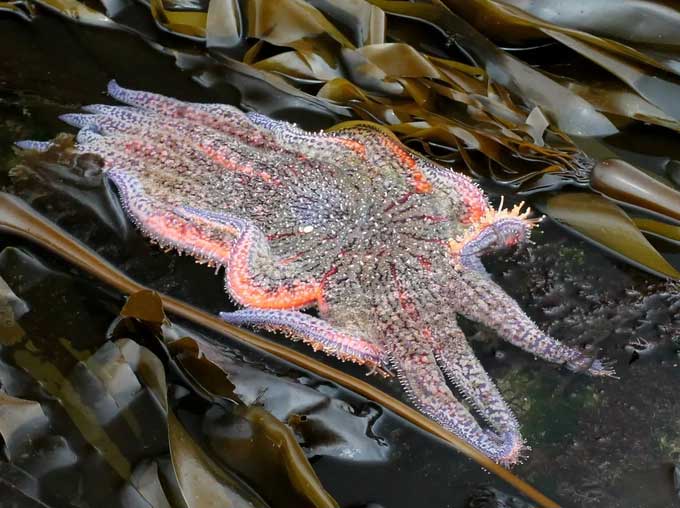
Sunflower sea stars can move quickly and far at a speed of 1 meter per minute. This is a sunflower sea star crawling through a kelp bed on the Washington coast. (Photo: randimal/Getty Images).
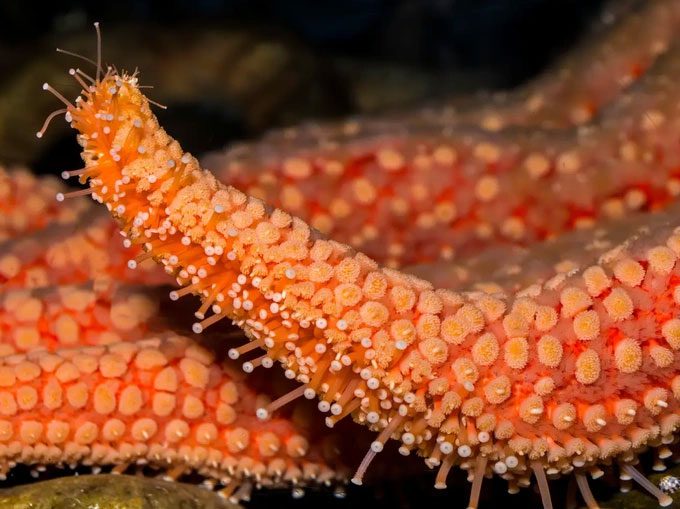
They have a skeleton unlike any other animal, allowing them to lie on their backs and open their mouths wide enough to engulf prey. (Photo: Gerald Corsi/ Getty Images).
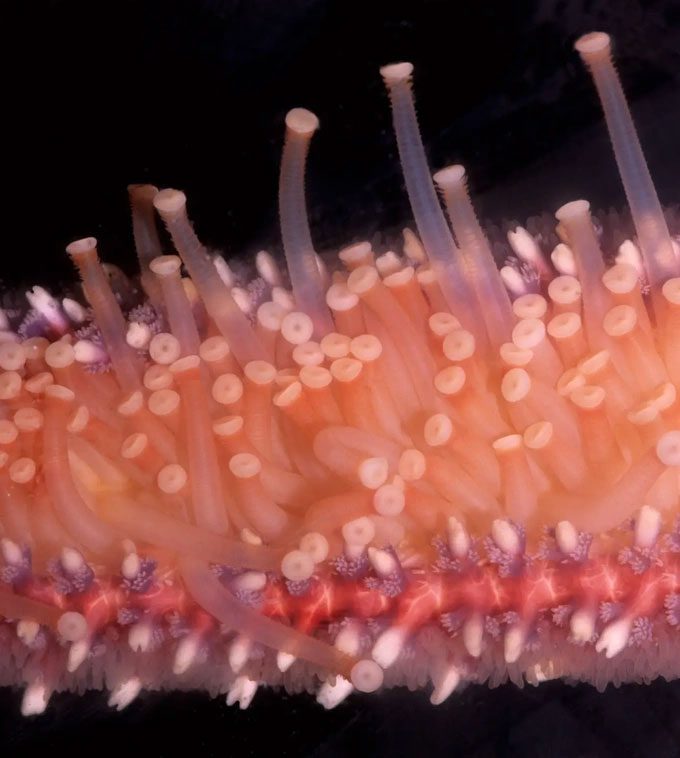
Sunflower sea stars have up to 15,000 tube feet that can regenerate if lost. Their tube feet are used for movement and capturing prey. (Photo: Ed Reschke/Getty Images).
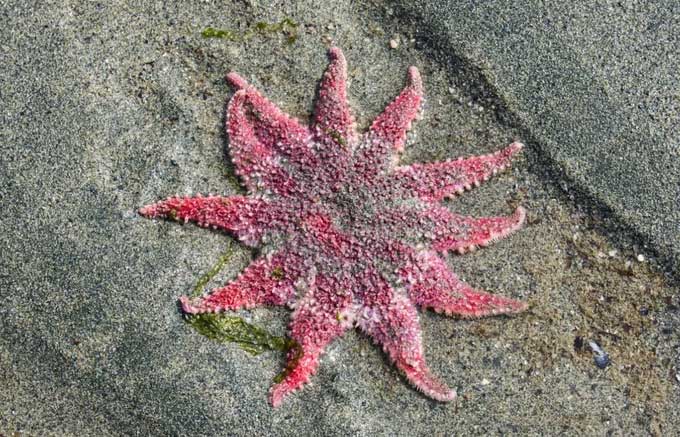
Their soft and porous skin comes in various colors, such as pink, orange, purple, green, and brown. (Photo: mscornelius/Getty Images).


















































